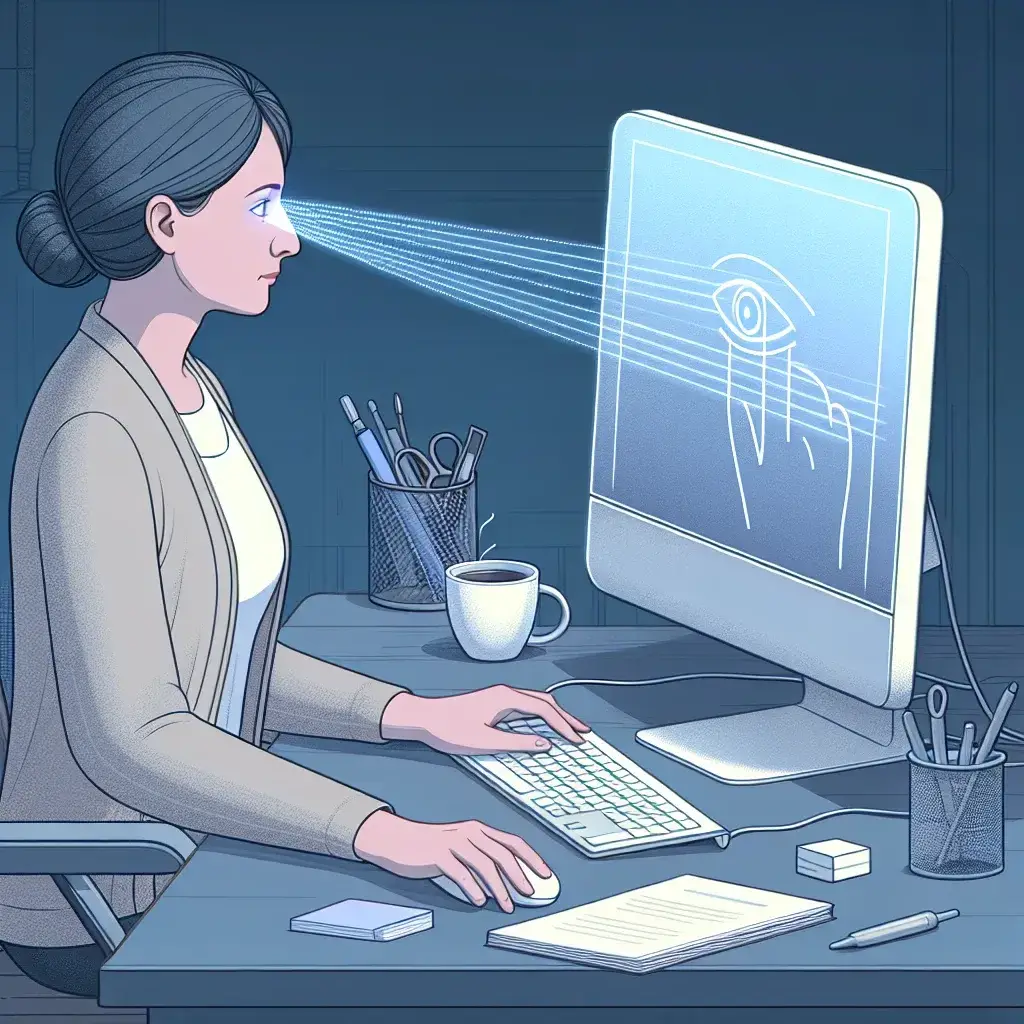Gaze-tracking technology, once considered a futuristic fantasy, is now becoming a commonplace feature in modern monitors. These advanced displays can detect where a user is looking and respond accordingly, opening up a world of possibilities. The benefits of using monitors equipped with gaze-tracking technology range from increased productivity to improved user experiences in various applications.
Productivity Enhancement
One of the most significant advantages of gaze-tracking technology in monitors is its potential to boost productivity in the workplace. Here’s how it works:
- Automatic Window Management: Gaze-tracking monitors can automatically switch focus between windows or applications based on where the user is looking. This eliminates the need for manual switching, saving time and reducing distractions.
- Hands-Free Interaction: Many tasks that would traditionally require a mouse or keyboard can be performed simply by looking at specific regions of the screen. This includes scrolling through documents, clicking on links, and even resizing windows.
- Enhanced Ergonomics: By reducing the need for repetitive hand movements, gaze-tracking monitors can help prevent strain injuries associated with long hours of computer use.
Table: Productivity Features of Gaze-Tracking Monitors
| Feature | Description |
|---|---|
| Automatic Window Management | Switches focus between applications based on user gaze |
| Hands-Free Interaction | Performs tasks without the need for mouse/keyboard |
| Enhanced Ergonomics | Reduces repetitive hand movements |
Improved Gaming Experience
Gaze-tracking technology also offers significant benefits in the realm of gaming. Gamers can enjoy a more immersive and interactive experience thanks to the following features:
- Natural Aim: In first-person shooter games, for instance, players can aim more intuitively by just looking where they want to shoot, rather than relying on mouse movements.
- Enhanced Interaction: Interactive elements within the game, such as menus, can respond to the player’s gaze, streamlining the user’s experience and keeping them immersed in the game world.
- Comfortable Gaming Sessions: By reducing the need for constant hand-eye coordination, gaze-tracking technology can make gaming sessions more comfortable, reducing potential strain.
Assistive Technologies for Accessibility
For individuals with physical disabilities, gaze-tracking monitors can revolutionize how they interact with computers. Here’s how this technology can be transformative:
- Communication Aids: People with limited mobility can use gaze-tracking technology to communicate effectively, selecting letters or words on a screen to form sentences with just their eyes.
- Control of Smart Devices: Gaze-tracking can be used to control various assistive devices around the home, enhancing the independence of those with disabilities.
- Improved Access to Education and Work: Individuals who find it challenging to use traditional input devices can participate more fully in educational and professional environments by using gaze-tracking monitors.
Healthcare Applications
In the healthcare sector, gaze-tracking technology can serve multiple purposes, aiding in diagnosis, therapy, and research:
- Diagnostic Tool: Eye movement patterns can provide critical information for diagnosing conditions such as autism, ADHD, and concussions.
- Rehabilitation: Patients undergoing rehabilitation for strokes or other neurological conditions can benefit from gaze-based exercises designed to improve cognitive and motor functions.
- Research: Gaze-tracking data can be invaluable for research studies focused on user behavior, cognitive functions, and more.
Enhanced User Experience in Retail and Advertising
Retailers and advertisers can leverage gaze-tracking technology to better understand consumer behavior and create more engaging experiences:
- Personalized Advertising: By analyzing where a user looks, advertisers can create more targeted and effective ads, increasing engagement and conversion rates.
- Interactive Retail Displays: In a retail setting, gaze-tracking monitors can create interactive displays that respond to where the shopper is looking, providing a more engaging and personalized shopping experience.
- Market Research: Companies can use gaze-tracking technology to gain insights into consumer preferences and behavior, helping them to refine their marketing strategies.
Future Prospects
The integration of gaze-tracking technology in monitors is just the beginning. As this technology continues to advance, we can expect even more innovative applications to emerge, further enhancing our interactions with digital devices. Some future prospects include:
- Virtual and Augmented Reality: Gaze-tracking will play a crucial role in the development of more immersive VR and AR experiences.
- Advanced Security: Eye-tracking could be used for personalized security measures, ensuring that only authorized users can access certain information or functionalities.
- Adaptive Learning Systems: Educational platforms could use gaze-tracking to adapt lessons based on student engagement and comprehension levels.
In conclusion, the benefits of monitors equipped with gaze-tracking technology are vast and varied, impacting numerous fields from productivity and gaming to healthcare and retail. As this technology becomes more widely adopted, its applications will continue to grow, making our interactions with digital devices more intuitive and efficient.

